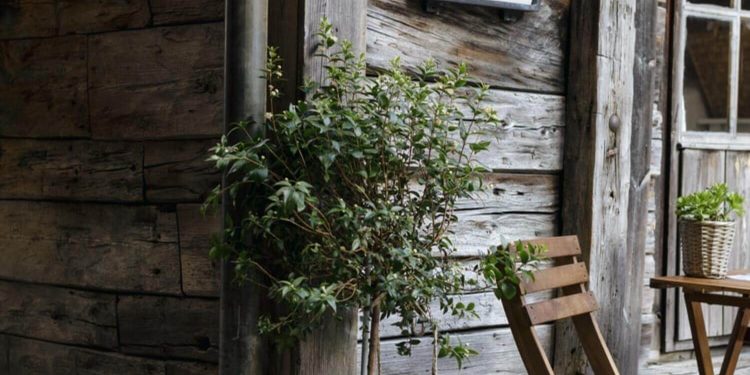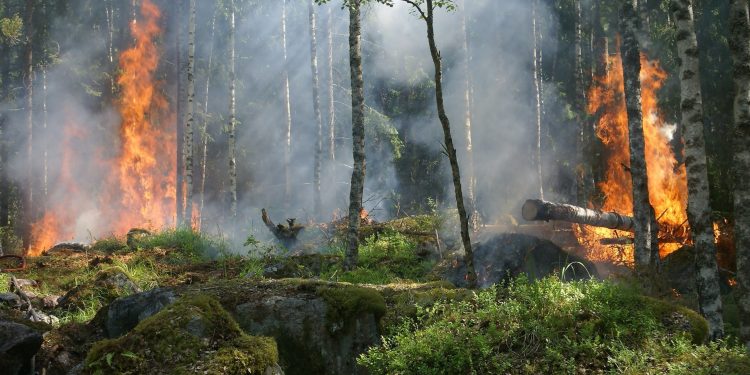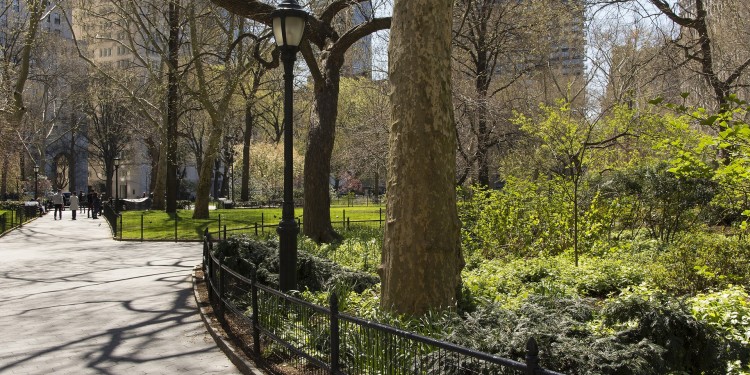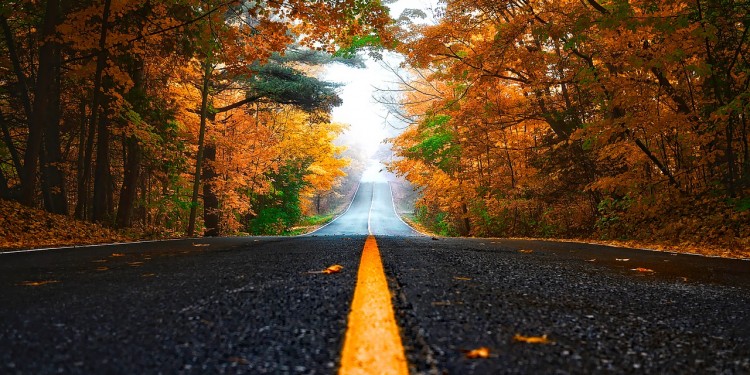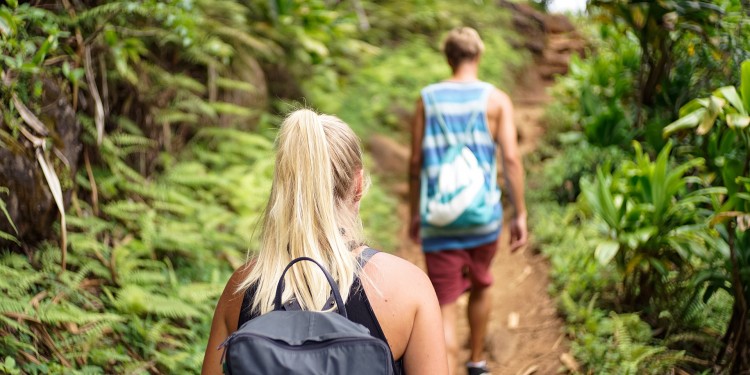Picking the right exterior for your home is more crucial than you think. […]
What Siding is the Most Resistant to Forest Fires?
As the 21st century progresses, Earth is slowly turning into a living hell […]
How to Make Your Home LEED-Certified
Planet Earth is a mess — natural resources are gradually being depleted, energy […]
Best Natural Wood Siding Options in the Pacific Northwest
Wood siding is a popular home exterior feature. It’s pleasant to the eyes, eco-friendly, and durable if maintained properly. However, this siding type is highly susceptible to moisture and rotting since it’s an organic material. Knowing this, you might be surprised at how common wood siding is in a wet region like the Pacific Northwest despite the challenges it poses.
Pros and Cons of Using Wood Siding
Like any siding type, natural wood excels in certain areas, but it might not be the perfect choice all the time. You can refer to this table for a quick overview of its qualities:
| Pros of Wood Siding | Cons of Wood Siding |
|
· High-grade aesthetics · Genuine material · Doesn’t harm the environment · Lasts for decades · Adds value to your home |
· Prone to insect invasion · Susceptible to weather changes · High-maintenance · Availability depends on the region · Expensive compared to PVS |
That said, most residents still choose wood because it blends naturally into their homes. It has a certain charm that can never be imitated by polyvinyl or fiber cement. Plus, you can get rid of most disadvantages that come with it by using wood treatment measures.
So if you’re looking to beautify your home with natural wood, here are the best siding options to choose from in the Pacific Northwest.
Pine
One of the most common types of wood, pine, grows fast and densely populates North America. If you’re clinging to a tight budget, you might want to use white pine for exterior walls. While relatively inexpensive compared to most wood species, its ‘sweet quality’ tends to attract termites and other wood-boring insects. But don’t drop the idea of using pine just yet. By utilizing the shou sugi ban technique, you can dramatically increase the durability of this material.
Cypress
If you can afford to use more than pine, cypress might be the wood you’re looking for. Most wood siding cons don’t apply to this type of material. It’s rot-resistant, easy to work with, repels termites, and extremely durable. Of course, you’ve guessed it right – cypress is extremely rare and costly. In fact, this hardwood used to be the standard for home exteriors, but its price has become a major turn-off nowadays.
Fir
Although pine is a great cost-effective option, you won’t find long length versions of it. That’s where fir takes the spotlight. Like pine, it’s not difficult to install, and the softwood texture makes it easy to mill. If you own a large home, you can use it to achieve a fresh-toned finish without compromising any breaks in the design. However, it does need a bit of extra maintenance since it’s more prone to weather changes.
Redwood
When it comes to wood siding, redwood is the king. On top of being rich in tone and texture, it also drives away bugs and is not affected by moisture. Additionally, you won’t have to worry about weather and pressure breaking down the wood since it’s highly flexible. True, it may cost a lot but the best thing about it? It’s readily accessible in Western parts of the U.S. So unless you’re from the East Coast, redwood isn’t entirely an expensive option.
Cedar
A close cousin of cypress, cedar might not be as strong, but it’s easier to obtain and still durable for the most part. You’ll love the distinct grain pattern that it features when stained. In addition to affordability, this natural wood resists swelling, cupping, and splitting. Although it’s not financially demanding to maintain, you must regularly check the seals and perform occasional repainting to prevent future damage.
Thermally Modified Wood
If you want to eradicate all sorts of disadvantages for your wood siding, consider thermally modifying the material. This is achieved by superheating the wood without the presence of oxygen. By doing so, the material becomes even more resistant to weather elements, temperature changes, molds, and pests. Although most wood species can be thermally modified, keep in mind that this process tends to make the color fade after 25-30 years.
Installing Wood Siding: DIY or Hire a Contractor?
Doing the job yourself might seem like the best way to save money. However, remember that a home siding is a long-term investment. It will cost you more to make repairs if not done correctly. Plus, natural wood installation is an extensive process that requires professional knowledge and ample experience.
In addition to that, siding contractors:
- Provide license and insurance. They can handle paperwork, obtain construction permits, and set up a workflow that complies with building codes. Don’t forget that their general liability insurance and worker’s compensation will cover your project from potential damage.
- Use appropriate equipment. Since siding generally lasts for decades, you might have to buy tools you won’t use again for a while when installing one. You might as well keep the money to purchase equipment by hiring contractors.
- Convenience. Siding installment is no easy task, especially if you live in a big house. Leaving the job to professional wood siding installers saves you from arduous labor and possible injuries.
When it comes to any home project, knowledge is power. So do your research to find out the best natural wood siding type that fits your budget. All the best!
Best Forests to Explore Near Los Angeles
With dense woods, scenic overlooks, and adventurous hiking trails, the city of Los […]
Manhattan Real Estate and the Magical Urban Forest
While it’s widely known that New York City is full of the unexpected, it may surprise most that it is one of the top ranking cities for urban forestry within the United States. After all, Manhattan conjures up images of a jungle of skyscrapers, not a forest of green tree tops. However, American Forests named NYC one of the top 10 best cities for urban forests, along with other cities including Charlotte, Milwaukee, Denver, and Austin. As unlikely as it might seem, NYC has a lot of good reasons to be considered on this list among the greenest of cities.
Forest Area Within the City
Most people don’t think of forests when thinking of NYC, so which areas of the city qualify as a forest? The truth is, the entire city is considered one large forest! Underneath the shadow of Manhattan’s towering buildings, NYC contains over 5 million trees of 168 various species. Street trees alone contribute to one-quarter of the city’s canopy, along with trees located in various parks throughout the different boroughs. One interactive map allows you to see all of the trees around the city as categorized by species type.
Common Tree Species
In NYC, the species of trees most common to the area is the London Planetree, which makes up 15.3% of the tree population in the city. This variety is widely used in urban areas because of its resilience to pollution and the wonderful shade it affords. Other common species include:
- Norway maple
- Callery pear
- Honey locust
- Pin oak
- Little leaf linden
- Green ash
- Red maple
- Silver maple
- Gingko
The city has an on-going tree consensus for counting the number of tree species each year, as the forest’s composition is constantly changing.
Preserving Forest Space
No urban forest can thrive with the threat of construction development. While trees are important to combating the emissions of NYC’s increasing population, approximately 9,000 acres were lost between 1984 and 2002 due to the city’s urban development and expansion. The constant threat to its green spaces means the city must make a special effort to protect its forests. The city’s current initiatives include generating awareness among residents about the importance of their trees, engaging constituents in urban projects, and using non-profit programs to bring in and survey thousands of trees. These efforts will help preserve critical forest space for future generations of New Yorkers.
Forest Roles Within the City
Protecting NYC’s urban forest is about more than just promoting aesthetics; urban greenery contributes to the health of residents and surprisingly, to the city’s economy. In a congested area like New York, carbon dioxide emissions can be a huge problem. Trees have the unique ability to naturally remove carbon dioxide from the air, replacing it with fresh oxygen, through the process of photosynthesis. Trees also play a crucial role in controlling flood and storm water within the city. They also contribute to energy savings by providing shade to neighboring homes and buildings, which means residents and businesses pay less for electric bills.
New York City is a prime example of how urban forestry can thrive, even in a major metropolitan area. Hopefully, the city’s efforts to preserve and protect its trees will mean clean air for future generations of New Yorkers. Thanks to Imperial Moving for partnering with us for today’s post. Imperial Movers offers comprehensive Manhattan moving services that make urban relocation easy and painless. This NYC moving company wants to see the city’s urban forest continue to thrive, because they recognize the importance of trees to the overall well-being of New York residents. They would like to remind you to keep your next move green, by using recycled boxes or reusable plastic containers for packing.
Top 6 Places to Camp in the U.S. National Forest System
The U.S. National Forest system began in 1891 with the designation of Yellowstone […]
Relocation Experts on How to Think Green and Save Trees with Your Next Move
Every year, millions of Americans pack up their homes and relocate. Whether they’re destined for a new house a few neighborhoods away, or an entirely different state, their move will have an environmental impact. From the packing supplies to the transportation used, there is a lot of waste and pollution that comes along with moving. If you find yourself moving this year, there are lots of ways you can think green when it comes to your next move! By following these tips, you can be an eco-conscious consumer, and possibly even save some trees along the way.
Take Time to Purge
Before you even start thinking about loading stuff into moving boxes, take a look around at what you have. The more things you take with you, the more packing supplies you’ll need and the more fuel you’ll burn in the moving process. Now is an excellent time to purge all of those unwanted items that are currently cluttering your closets and clogging up your dresser drawers. Consider donating or selling your used items so someone else can get additional use out of them. If you have old appliances that are no longer working, they can usually be recycled and used for scrap material. Your discarded items should only go to the landfill as a last resort. Not only will purging relieve you of undesired baggage and make your move cheaper, it reduces waste by enabling you to upcycle your goods.
Let the Packing Begin
Once you’ve sorted out the items that you are keeping, it’s time to start packing. Instead of rushing out and purchasing brand new cardboard moving boxes and packing paper, there are some great environmentally friendly alternatives:
- Recycled boxes: It takes 17 trees to produce one ton of cardboard, which is equivalent to about 2577 cardboard boxes. This may not sound like a lot of trees, but when you consider that the average household needs over 100 boxes to move and that 30 million Americans move every year, that means if everyone purchased brand new boxes, it would take 19.8 million trees to produce those boxes. The great news is, there are plenty of places to find used cardboard boxes for your move to reduce paper waste and help preserve our forests. Grocery stores and other retailers often receive their shipments in a variety of cardboard boxes. Check with your neighborhood stores to see if any will give you their used shipping boxes. Check the copy room at your office to see if there are any extra paper ream boxes laying around, or if you know someone who has recently moved, ask if they have any spare boxes they no longer need.
- Go plastic: There are also a number of options for purchasing reusable plastic tubs. These are great for later storage use in your house or can easily be stacked and put away for future use.
- Newspapers: Instead of buying packing paper, recycled newspaper is just as effective for wrapping up your dishes, glassware, and other breakables. Additionally, you can use towels, t-shirts, and any other soft fabric items you already own as extra cushioning for your fragile items.
Moving Day
Once you’re packed, it’s time to get moving. Depending on the type of move you’re doing, there are different ways you can reduce emissions from fuel usage.
- DIY move: If you’re moving yourself, be efficient by renting a truck that’s large enough to accommodate your belongings in one load. Using a smaller vehicle and making several trips between houses is not only an inefficient use of time, but it also burns far more fuel than just making one trip.
- Local moves: If you’re moving in town, try to use a local mover that’s close to either your old or new residence. The closer the mover is, the less gas they’ll waste getting to your home and moving your things.
- Long distance moves: If you’re using a long distance moving company to move out of state, opt for consolidated service. With consolidated shipping, the movers pick up multiple loads along a route, both maximizing the truck space and reducing the number of trucks needed to deliver the household goods. It’s also much cheaper than using a direct delivery service.
- Vehicle shipment: If you plan on shipping your vehicle(s) rather than driving it to your new home, use a consolidated auto transport service, also known as open car transport. With open car shipping, multiple cars are shipped on one truck, reducing emissions.
While moving may be an inevitable part of life, you can do your part to ensure your move has the least environmental impact possible. Reduce your carbon footprint and save trees when you follow these tips for moving green!
Additional Eco-Friendly Tips When Moving
Thinking green doesn’t only benefit you but the future generations to come as well. That’s why every logistic that surrounds your move should be approached with the environment’s welfare in mind. Aside from the steps above, here are other ways you can save trees on your next move:
- Plan what to do with your boxes after relocating. Remember how many trees are sacrificed to make cardboard? You don’t want companies to keep producing boxes when current ones in existence can still be used. If you’re not moving any time soon, you can:
-
- Take the boxes to the local recycling center.
- Sell or donate them for charity use.
- Give them away to neighbors.
- Use them for storage or keep them for future use.
- Craft playhouses for your kids or use the boxes for DIY projects.
- Properly dispose of hazardous chemicals. Some chemicals are too dangerous to transport, such as gasoline, kerosene, fertilizers, pesticides, antifreeze, and motor oils. These things can cause explosions, corrosion, and poisoning if they leak during transit.
However, just because you can’t bring them along doesn’t mean you can leave them as is. Besides posing a hazard, they can cause irreversible damage to the environment.
So before you move out, give them away to neighbors. You could also research the chemical’s disposal protocol or reach out to the Environmental Protection Agency and ask for advice on discarding the item safely.
- Hire eco-friendly movers. Not all moving companies only care about money. Some share the same love you have for the environment. Ask your potential movers what measures they take in keeping the moving process clean and green.
You’ll know that they’re eco-friendly if they:
- Use bio-diesel for gas and lower-emission trucks.
- Utilized cardboard boxes from previous moves.
- Know how to responsibly discard packing supplies.
- Use green bubble wrap and other eco-friendly materials.
- Plan the quickest and fuel-efficient route to your new home.
- Consolidate deliveries to make a one-way trip.
Finally, use the supplies you already have in your home. Besides helping Mother Nature, you can also save some money. Instead of buying packing supplies, use newspapers, old linen, sheets, and blankets to pad your belongings. You could cram books inside suitcases while stuffing laundry in trash bags. Honestly, there are many ways to use household items for packing. You just have to be creative and resourceful!
Deep in the Amazon – Inside the World’s Biggest Rainforest
The Amazon Rainforest spans 2.124 million square miles, covering Brazil, Colombia, Peru and […]

